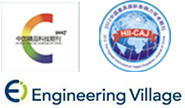Abstract:
To meet the demand for thermal management of lithium-ion batteries in electric vehicle, the cooling method with phase change materials (PCM) on battery modules has gradually become a research hotspot. Based on the poor physical properties of organic PCM, the preparation and improvement directions of composite organic PCM for battery thermal management (BTM) are summarized, including adding multi-dimensional materials such as carbon materials, nano-metals and metal foams to enhance the heat transfer, and adding copolymer such as polyethylene and thermoplastic elastomer to improve the flexibilities. Additionally, flame retardants such as red phosphorus and ammonium polyphosphate are used to improve the flame retardance for better practicabilities. Among them, expanded graphite, styrene-ethylene-butadiene-styrene, and the composite of red phosphorus and ammonium polyphosphate significantly improve the thermal conductivity, flexibility and flame retardancy respectively. Subsequently, the heat transfer enhancement effects of the system after coupling organic PCM with heat pipe, liquid cooling or air cooling are evaluated, indicating that various arrangements of heat pipe and appropriate flow channels of air and liquid should be considered. Then the optimal operating conditions of organic PCM used in BTM system is determined with numerical calculation. Finally, the progress and shortcomings of organic PCM used in BTM are summarized. It is pointed out that the difficulties of composite organic PCM used in BTM are still accounted for the improvement of flammability and conductivity and the insufficient flexibility of flexible organic PCM at room temperature. Furthermore, the reliability and cycle feasibility of PCM and traditional heat dissipation system in the process of vehicle use are still lack of verification. Totally, several suggestions are put forward for the application of organic PCM in BTM in the future.


 下载:
下载: